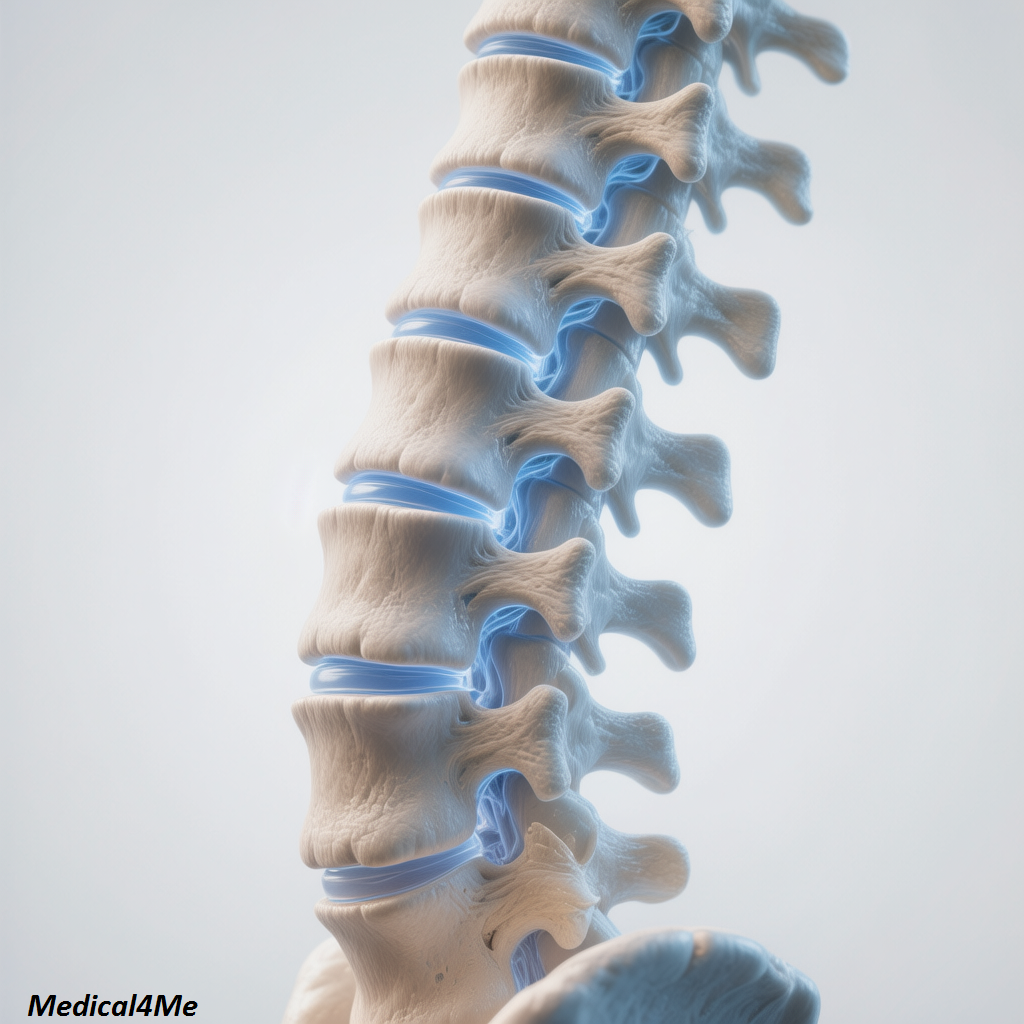A Doctor’s Honest Guide to Understanding and Treating Back Pain
Hey there. It’s Dr. Saqlain.
The clinic lights are off, my last patient left an hour ago, and the quiet has finally settled in. It’s nights like these, sitting here at my desk, that I think about the people who aren’t resting easy. People like you, maybe. Typing your symptoms into a search bar, your mind racing, a knot of worry tightening in your stomach with every click. Tonight, I saw a gentleman, let’s call him Mr. Ahmed, who reminded me why I need to write this. He came in walking so stiffly, his face a mask of pain. He’d been dealing with debilitating back pain for weeks, convinced it was something terrible after spiraling down a rabbit hole of online forums.
I want to talk to you like I talked to him. No complicated medical jargon. Just a straight, honest conversation from my heart to yours.

So, What Really Is This Back Pain You’re Feeling?
You ever wonder what’s actually happening in there?
Think of your spine less like a stack of blocks and more like a high-tech suspension bridge. Your vertebrae are the massive steel towers. The discs between them are the sophisticated shock absorbers, designed to handle immense pressure. And your muscles and ligaments? They are the thousands of interwoven steel cables, all working in perfect, tense harmony to keep the entire structure strong, upright, and flexible.
Back pain is what happens when something disrupts that harmony.
It could be a frayed cable (a muscle strain), a worn-out shock absorber (a disc issue), or even a problem with the foundation of the towers themselves (a bone-related problem). It’s not just one thing; it’s a signal that the system is under stress. Actually, let me explain this better… we often think of pain as the enemy, but it’s really just a messenger. It’s your body’s alarm system screaming that something isn’t right. The trick isn’t just to shut off the alarm—it’s to find out what’s causing it to go off in the first place. That’s my job. And understanding this is the first step in your own healing journey.
The Symptoms – More Than Just an Ache
When you read a list of symptoms online, it’s just words. “Dull ache,” “shooting pain,” “numbness.” It doesn’t capture the reality of it, does it?
It doesn’t capture the way a sharp, electric shock shoots down your leg when you stand up too fast, making you gasp.
It doesn’t describe the deep, relentless throb in your lower back that’s the first thing you feel in the morning and the last thing you feel at night. It’s a constant, unwelcome companion. Or that terrifying feeling of stiffness, where you feel like your own body has turned against you, refusing to bend or twist the way you want it to. Mrs. B, a patient from a few months back, described it best. She said, “Doctor, it feels like a hot, tight strap is cinched around my hips, and every move I make just pulls it tighter.” That’s real. That’s the feeling, not just the word.
You might feel weakness in your legs, a strange tingling like pins and needles, or a pain that seems to have a mind of its own, moving from a central point and radiating outwards. This isn’t just “pain.” It’s an experience that affects your mood, your sleep, and your ability to do the simplest things, like with other conditions I see here at the clinic.
Why Me? A Simple Look at the Causes
So, why is this happening to you now?
The most common reason I see, day in and day out, is simple mechanical strain. Think about it. We sit for hours in chairs not meant for our bodies. We lift heavy things with our back instead of our legs. We twist suddenly to grab something. These are the small moments that can fray one of the “cables” in your suspension bridge—a muscle or a ligament. This is what happened to Mr. Ahmed. He’d spent a weekend doing heavy yard work, and his body was now paying the price. It’s incredibly common, and thankfully, often the easiest to fix.
Then there are the “shock absorbers”—your discs. Over time, they can bulge or even rupture (herniate), pressing on a nearby nerve. This is what often causes that sharp, shooting pain down the leg, which we call sciatica. It’s like a shock absorber has failed and is now poking into the sensitive electrical wiring of your body.
Less commonly, but still possible, are things like arthritis, where the joints in the spine become inflamed, or skeletal irregularities. And we still don’t fully understand why for some people, the pain signals seem to get “stuck” in the on position, leading to chronic pain long after the initial injury has healed. What bothers me is when websites claim a single “miracle cure” for all back pain. It’s just not that simple; the cause dictates the treatment.
The Journey to a Diagnosis: What to Expect
Coming to see a doctor can be intimidating. I get it. You’re worried about what we’ll find and what the process will be like. So let’s walk through it.
First, we’ll just talk. I need to hear your story. When did it start? What does it feel like? What makes it better or worse? This conversation is the single most important tool I have. You are the expert on your own body, and I need to listen to what it’s telling you.
Then, I’ll do a physical exam. I’ll ask you to bend, twist, walk, and lift your legs. I’m not trying to torture you, I promise. I’m testing the different “cables” and “towers” of your spine to see where the weakness or pain is originating. I’ll check your reflexes and muscle strength. For the vast majority of people with back pain, this is all we need.
Sometimes, if your story or my exam points to something more, we might need imaging. An X-ray can show us the bones, while an MRI is better for looking at the discs and nerves. But I don’t order these for everyone. A young patient, Sarah, came in recently terrified she needed an immediate MRI. She’d been active in sports and just had a severe muscle strain. An expensive scan wasn’t going to change her treatment of rest and physical therapy. We have to be smart about it. The goal isn’t to get a pretty picture; it’s to get you better. The WHO data shows that most cases of low back pain are non-specific and resolve on their own, so we often start with the simplest path first.
Getting You Better: Treatments, from Simple to Serious
Alright, let’s talk about solutions. Your treatment plan will depend entirely on what’s causing the pain.
For most mechanical strains (like Mr. Ahmed’s), the answer is wonderfully low-tech.
- Active Rest & Gentle Movement: We used to say “bed rest,” but we know now that’s the worst thing you can do. Gentle movement like walking is key. (Cost: Free!)
- Physical Therapy: This is the gold standard. A good therapist is like a master mechanic for your body. They’ll give you specific exercises to strengthen weak muscles and stretch tight ones. This is the long-term fix. (Cost: This can vary wildly depending on insurance, but expect a co-pay of $25-$75 per session.)
- Heat/Ice: Simple, but effective for managing flare-ups. (Cost: A few dollars for a heat pack or bag of frozen peas.)
- Over-the-Counter Meds: Anti-inflammatories like ibuprofen can help reduce the inflammation and take the edge off. (Cost: Under $10.)
If the pain is from a nerve being pinched by a disc, the options expand.
- Prescription Medications: I might prescribe a stronger anti-inflammatory or a muscle relaxant. In some cases, nerve pain medications are helpful. We’re very careful with these, as the CDC guidelines state, we want to avoid long-term reliance on powerful drugs.
- Injections: A cortisone shot can deliver powerful anti-inflammatory medicine directly to the source of the problem, calming down an irritated nerve. This can provide immense relief and create a window for physical therapy to be more effective. (Cost: Several hundred to over a thousand dollars, often covered by insurance.)
Surgery is always, always the last resort. We only consider it when there’s a clear structural problem that isn’t getting better, and the pain is severely impacting your quality of life. The Mayo Clinic explains the different surgical options well, but this is a conversation for much further down the road for most people.

Red Flags: When to Stop Searching and Go to the ER
This is the part you’ve probably been searching for. When is back pain an emergency?
While most cases are not, there are a few “red flag” symptoms that mean you need to seek medical care immediately. Not tomorrow, not next week. Now.
- Pain that is a result of a major trauma (a car accident, a bad fall).
- Loss of bowel or bladder control. This is the big one. It can signal a serious condition called Cauda Equina Syndrome.
- Numbness or weakness that is new and progressively getting worse, especially in the “saddle” area (the parts of your body that would touch a saddle).
- Pain accompanied by a fever you can’t explain.
- Pain that is constant, severe, worse at night, and isn’t relieved by any change in position.
If you have any of these, please, stop reading this and get to an emergency room. Is it clear why this is so different from a standard ache?
The Questions I Hear Every Day
As I’ve mentioned in some of my recent posts, people have a lot of the same worries. Here are the top questions I get about back pain right here at Medical4Me.
Will I need surgery?
Probably not. The vast, vast majority of people with back pain get better with time, physical therapy, and other conservative treatments. I can count on one hand the number of patients I’ve sent for surgery consultations this year. So take a deep breath.
Is this something I just have to live with forever?
For most acute episodes, no. The pain will go away. If you have a more chronic condition like arthritis, the goal shifts from “curing” it to “managing” it. You can and will have a full, active life by learning how to manage your symptoms, strengthen your body, and prevent flare-ups. Don’t lose hope.
Do I need an MRI?
As I mentioned with Sarah, usually not right away. An MRI can show us a lot, but sometimes it shows us too much. Many people without any pain have bulging discs on their MRIs! We treat the patient, not the scan. We only order it if we have a specific question we need answered to guide your treatment.
Could my pain be cancer?
This is the fear that keeps people up at night. While it is a very, very rare cause of back pain, it’s a valid fear. The “red flag” symptoms I listed above are what would make a doctor start to consider this possibility, especially if you have a prior history of cancer. But for the average person with a new onset of back pain, the cause is almost certainly mechanical.
My Final Advice to You, Tonight
I know you’re tired. And I know you’re in pain. If you’ve made it this far, it means you’re trying to take control, to understand what’s happening to your body. That’s a huge and important step.
Don’t let fear paralyze you. The internet is a place of infinite information, but it lacks wisdom and context. It can’t listen to your story or see the look on your face.
Your pain is real, but in most cases, it is not a sign of something catastrophic. It’s a signal to slow down, to listen to your body, and to ask for help.
The key takeaway? Your back is an incredibly strong and resilient structure, but it needs to be cared for. If you’re experiencing back pain that’s worrying you, affecting your life, or includes any of those red flags, please see your doctor.


💬 Share Your Experience
Share your thoughts, questions, or personal tips below. Our community and editorial team value respectful and insightful discussions.